Research
Research in the MPWC group in Leipzig focused on the evolution of the human masticatory apparatus. To interpret evolutionary changes in fossil human anatomy, we need an informed understanding of the structure, development and function of bones, teeth and their constitutive tissues at both the macroscopic and microscopic level. This includes soft tissue anatomy (e. g. muscle, periodontal ligament) and functional performance parameters such as bite force which natural selection also acts upon.
Our research projects cover the following aspects:
Structure-function studies of calcified tissues
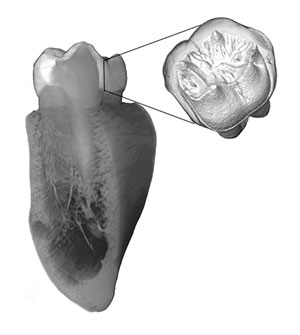
The central tenet of this research strand is to address whether differences in bone and tooth form commonly used in phylogenetic studies also constitute adaptations to specific feeding functions and dietary differences. To this end, we employ high resolution scanning and material testing to image and characterise bone and dental tissues. The findings are the baseline data for computing the complex stress-strain regime in skeletal structures by means of finite element modelling.
Anatomy and histology of masticatory muscles
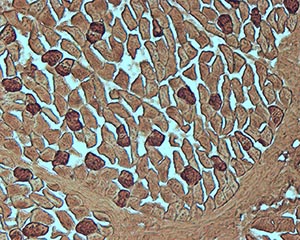
Chewing force generation capabilities strongly depend on the mass, architecture and fibre composition of the jaw-moving muscles. Domestic dog breeds are a great model for studying the relationship between variation in muscle fibres and chewing performance. We use immunohistochemistry to quantify the distribution of muscle fibres.
Kinematics and dynamics of the masticatory apparatus
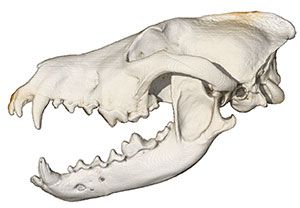
Bite force and occlusion are the masticatory performance parameters which are directly linked to the efficiency of food intake and processing. We are especially interested in the question how masticatory performance varies with changes in skull morphology. Jaw motions will be studied through bi-planar fluoroscopy in conjunction with bite force measurements.
Covariation of dental and cranial morphology
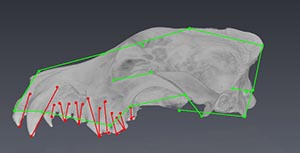
How do the jaws and teeth covary to achieve masticatory efficiency? Landmark-based geometric morphometrics is used to analyse the covariation pattern between upper and lower jaws as well as between the dentition and the jaws.
Dietary reconstruction
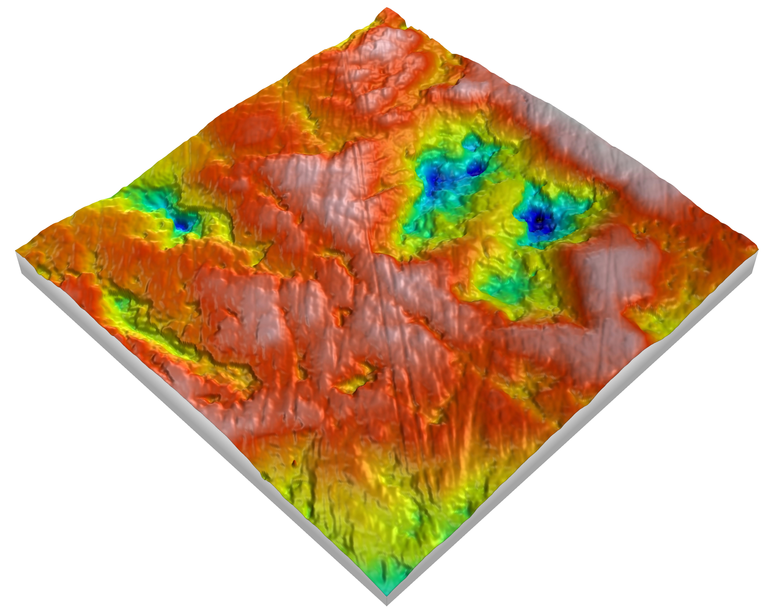
Measuring dietary abrasiveness in tandem with existing data on food selection in primates is our main target to get a more complete picture of physiological responses to seasonal dietary shifts. We test how diet and dietary variability over time is reflected in tooth wear to reconstruct palaeodiet in fossil hominins.
Feeding experiments and chewing function
Processes of tooth wear are still not well understood. Thus, to what degree internal and external abrasives cause dental tissue loss is a matter of ongoing controlled feeding experiments. We are especially interested in the balance between wear, chewing performance, and tooth growth as well as in the question of how abrasives can act as evolutionary drivers of dental adaptations.